Skin care is an everyday activity for most people. The average U.S. women uses about 12 different personal care products each day, while men tend to have a simpler routine with about 6 different products.
This might not sound very alarming to you— until you look at a few more facts.
Just by using an ordinary number of skincare products, women expose themselves to an estimated 168 chemicals every day. Men fare a bit better and “only” get exposed to about 85 chemicals per day from skincare. That’s not even counting toxins from food, water, etc.
No matter which way you look at it, that’s a large number of chemicals to be applying to your skin daily.
And that’s why cleaning up your skincare products is one of the top ways to get healthier, younger-looking skin and improve your health by cutting down on toxic load.
But of course, you first need to know which toxins to be looking out for…
Why Skincare Isn’t Clean
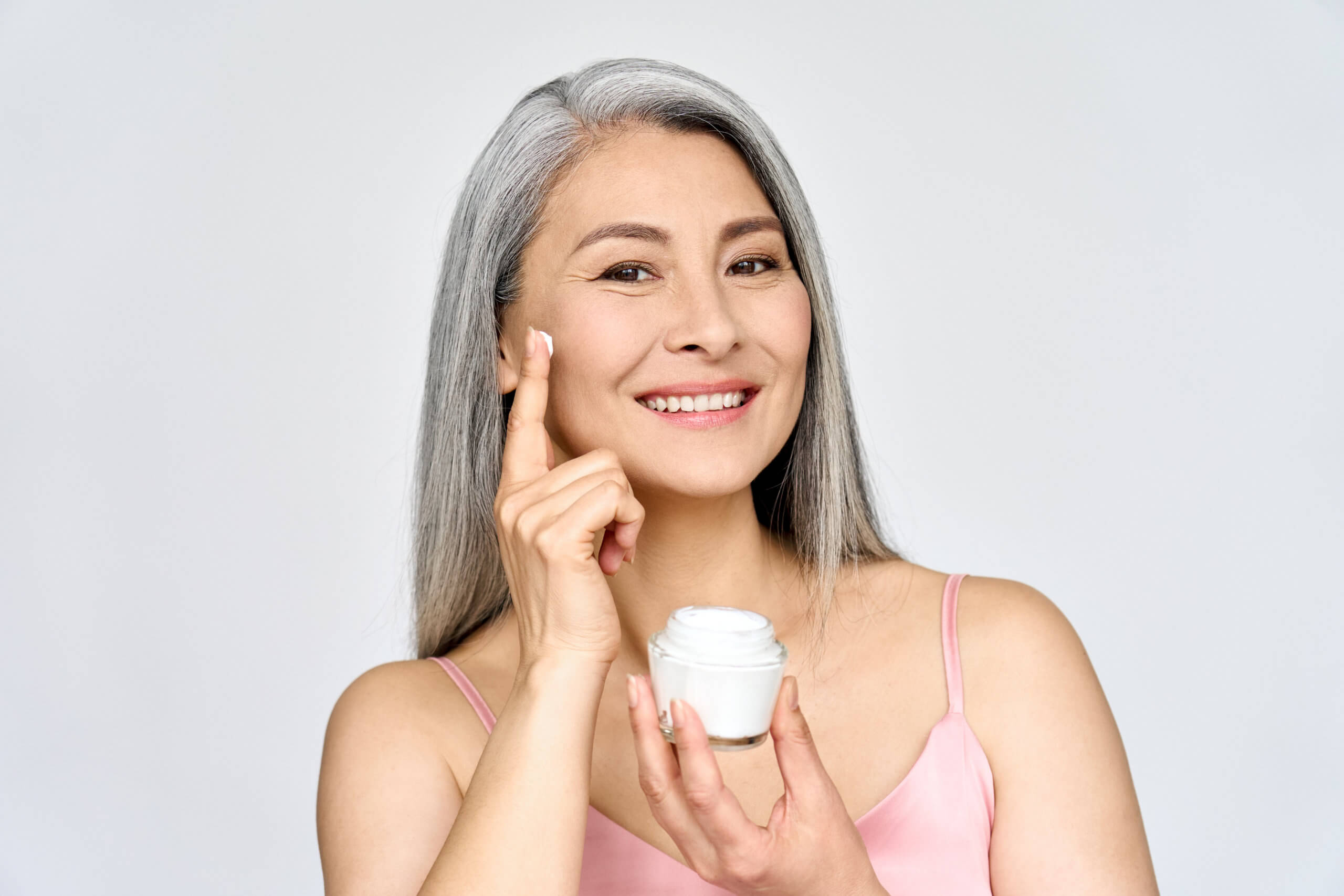
At this point, you might be wondering why you even need to worry about what’s in your skincare products.
The truth of the matter is the skincare and cosmetics industry is highly unregulated. Many industrial chemicals (including carcinogens, plasticizers, and hormone disruptors) are allowed in skincare products in spite of research that questions their safety.
At least, this is true of U.S. products.
In the European Union (EU), for example, about 1,693 chemicals are banned from cosmetics because they are known, or suspected of, being health hazards. By comparison, the U.S. bans or restricts only 11 chemicals from cosmetics products.
This means that if you use skincare from the U.S. (or other countries with few regulations), you cannot trust that it is clean and toxin-free. Most likely, it isn’t.
Why Skincare Should Be Clean
Anything you apply to your skin has the chance to be absorbed into your body. This doesn’t mean that everything is absorbed, but many of the toxic chemicals found in skincare are small enough to get through your skin’s barrier and into your bloodstream.
This includes chemicals that are hormone disruptors, carcinogens, reproductive toxins, and allergens. All toxins you do not want to accumulate in your body.
Many people are becoming more aware of this fact, but there’s another aspect of toxic skincare that surprisingly gets overlooked: its impact on your skin.
Not only can toxins get absorbed and harm you from the inside out, they are also major accelerators of the aging process in your skin. They can degrade your skin’s natural barrier, cause symptoms like dryness, redness, and flaking, and induce free radical damage that contributes to old-looking skin.
To protect both your skin and your health, you need skincare that is truly clean and toxin-free.
With that in mind, here’s a look at which toxic ingredients to avoid at all costs.
The Worst Toxins in Skincare
Fragrance
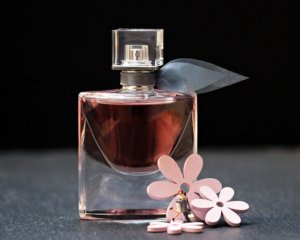
Synthetic fragrances are everywhere, including in many skincare products. And it cannot be overstated how important it is to avoid this ingredient.
Fragrance is not just a single chemical. It refers to a usually toxic cocktail of many different chemicals that manufacturers don’t have to disclose to you.
That’s right— fragrance is considered a “trade secret,” so consumers don’t have to be informed about the extra chemical ingredients hiding in their products. In fact, a product that has the word “fragrance” on the label could include any number of over 3000 possible chemicals.
Many of these hidden fragrance chemicals are derived from petroleum and are one of the biggest triggers for allergic reactions.
Even worse, some of these chemicals are known or suspected carcinogens, endocrine disruptors, respiratory toxins, and neurotoxins.
The bottom line: Avoid any product that contains fragrance (sometimes listed as ‘parfum’).
Phthalates
Phthalates are a group of chemicals frequently used in plastics, like polyvinyl chloride (PVC), to make them more flexible.
So what are they doing in your skincare products?
Phthalates have other roles that include helping products stick to our skin and enhancing their function. You’ll find them in conventional nail polish (to keep it from becoming brittle) and in hair spray (to keep it flexible but able to hold your hair in place).
There’s also another common hiding spot for phthalates: fragrance.
They act as a solvent and help fragrance to “stick”. But you’ll never see them on the label, since they are a part of the “trade secret” that doesn’t have to be revealed.
Studies have linked phthalates to hormone disruption, reproductive toxicity, and developmental issues in children. One particular phthalate, DBP, has also been found to potentially increase the ability of other toxins to cause genetic mutation.
Watch out for products that contain the word “phthalate” or abbreviations like DBP, DMP, and DEP (and, of course, avoid fragrance).
Parabens
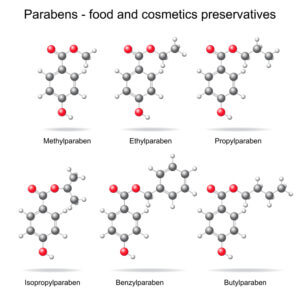
Parabens are used in many products, including skincare and cosmetics. They essentially act as preservatives by preventing bacterial growth.
The problem with parabens is that they are easily absorbed into your skin and are linked to serious health issues.
Most notably, parabens are endocrine disruptors. They can mimic certain hormones in the human body, which can result in a whole host of problems, including reduced fertility. Some studies have also revealed that certain types of parabens may increase your risk of breast cancer.
To avoid these nasty chemicals, look out for any variation of “paraben” on the label. This includes methylparaben, butylparaben, and propylparaben.
Sulfates
Sulfates are a very common toxin in skincare. The two you’ll see most often are sodium lauryl sulfate (SLS) and sodium laureth sulfate (SLES).
Both SLS and SLES are surfactants and used to increase foam and lather in products. This means they show up frequently in skincare that creates suds, particularly conventional facial cleansers and soap.
The downside to SLS specifically is that it’s a known skin irritant and can strip your skin of healthy oils. Long-term use may lead to skin sensitivity and even mouth ulcers (when used in toothpaste).
SLES appears to be less irritating and is often used in “green” products in place of SLS. However, it can be an even worse ingredient because it’s frequently contaminated with ethylene oxide, a known human carcinogen, and 1,4 dioxane, a probable human carcinogen.
Do your skin a favor and avoid both of these ingredients!
Petrolatum (aka Petroleum Jelly)
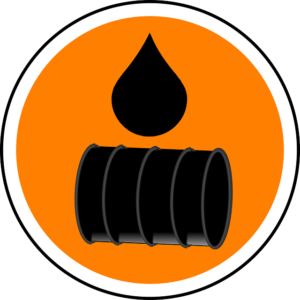
Many ingredients in common skincare products are derived from petroleum (the same crude oil gasoline comes from)— and consumers should not be okay with that.
Petroleum jelly (also called petrolatum) is a prime example of this.
In its properly refined form, petroleum jelly is supposedly safe (as long as you’re okay with a petroleum derivative on your skin). However, in the U.S. and other countries, most petroleum jelly is not properly refined. This often leads to contamination with toxic chemicals known as polycyclic aromatic hydrocarbons (PAHs).
PAHs are listed as probable carcinogens, which means they may increase your cancer risk.
White petroleum is the only version (in the U.S.) that is fully refined and should not contain PAHs. However, petroleum is not a renewable resource, and there are many plant oils you can use instead that have nothing to do with gasoline.
Formaldehyde-Releasing Preservatives
Formaldehyde is a strong-smelling chemical used as a disinfectant and for embalming. It’s present in many building materials and household products, but you might be surprised to learn it’s also likely present in your skincare.
If you read the label on a skincare product, you won’t find formaldehyde listed, but that doesn’t mean it’s not there.
One possible hiding spot for this chemical is in fragrance, where it can be added in small amounts. Several common preservatives, known as formaldehyde-releasing preservatives, can also release small amounts of formaldehyde over time into the products you apply to your skin.
Not only is formaldehyde listed as a known human carcinogen, it can also contribute to respiratory issues and skin irritation.
DMDM hydantoin and quaternium-15 are two common formaldehyde-releasing preservatives to avoid. Also, watch out for anything with the word “urea” in the name, sodium hydroxymethylglycinate, and 2-bromo-2-nitropropane-1,3-diol (bromopol).
PFAS
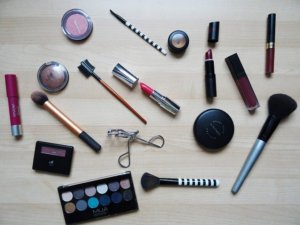
PFAS is an abbreviation for per- and polyfluoroalkyl substances, a highly persistent group of chemicals often referred to by the nickname “forever chemicals”.
There has been much recent research documenting the potential health hazards of various PFAS. They are linked to cancer, hormone disruption, liver damage, and much more. Even more worrying is the fact that they accumulate in both the environment and human blood.
In fact, there is evidence that PFAS are even more toxic than previously realized, and their dangers have been suppressed by “interested parties”.
This is concerning because PFAS are frequently added to cosmetics to improve durability and water resistance. One study from 2021 found PFAS in over half of the products tested, particularly in foundation and eye makeup.
It’s difficult to find these toxins listed clearly on the label, but look for ingredients like PTFE and “perfluoro” chemicals.
DEA & Other Ethanolamines
Diethanolamine (DEA) is a chemical added to skincare products to make them foamy or creamy. This means it can be found in facial cleansers and other types of soap as well as some moisturizers.
One problem with DEA is that it can cause skin irritation, which makes it a questionable ingredient for skincare. It’s also considered a potential carcinogen due to animal studies showing that topical exposure increased kidney and liver tumors.
There’s also the chance that DEA can react with nitrites in cosmetics products (from preservatives) to form nitrosamines, another possible human carcinogen.
You’ll want to watch out not only for DEA, but also for the related ethanolamines known as MEA (monoethanolamide) and TEA (triethanolamine).
BHT & BHA
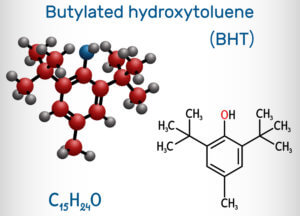
Butylated hydroxytoluene (BHT) and butylated hydroxyanisole (BHA) are synthetic preservatives often used in cosmetics and personal care products (and in food). This includes lip care, moisturizers, hair products, deodorant, sunscreen, and more.
There has been a lot of controversy over whether these preservatives are harmful or harmless, but each has shown definite negative effects in studies.
Both BHT and BHA can cause allergic skin reactions. In addition, BHA is classified as a possible human carcinogen and endocrine disruptor, while BHT is linked to kidney and liver damage as well as respiratory issues with topical application.
Natural preservatives are a much better choice, so avoid these two by watching out for both their abbreviations and full names.
Synthetic Dyes
Here’s another surprise: Coal tar is present in many cosmetics products in the form of dyes and coloring.
That’s right, many of the colors you’ll find in cosmetics are derived from coal tar. This includes “pretty” shades in a range of colors as well as subtle tints and dark blacks.
This is a huge problem because coal tar is a known human carcinogen. A substance known as P-phenylenediamine is an especially problematic coal tar dye (often used in hair dyes) and is linked to tumor formation in lab studies.
Your best option is to choose products that have no added dyes or use colorings that come from natural sources (always read the label to be sure!). At the very least, watch out for P-phenylenediamine on the label and colors listed as “C.I.” followed by a 5-digit number.
Polyethylene Glycol (PEG) Compounds
Polyethylene glycol (PEG) is another example of a common skincare ingredient that is frequently derived from petroleum. Various types of PEG compounds are used as thickeners, softeners, and solvents in creams, detergents, and other products.
Apart from yet again coming from petroleum, PEG compounds are a problem because they are frequently contaminated with ethylene oxide and 1,4 dioxane.
As mentioned before, both of these contaminants have the potential to increase your cancer risk. There’s also indication that PEG itself may cause genotoxicity, which means damage to the genetic information in cells, possibly leading to cancer.
Look out for any ingredient with the abbreviation “PEG” in it.
Get Toxins Out of Your Skincare
Just like your body needs healthy food to thrive, your skin needs clean and nourishing products to look and feel its best.
But as you can see, you aren’t going to get toxin-free skincare from most conventional products. Instead, you’ll only be loading up on chemicals that are bad for your skin and the rest of your body.
on chemicals that are bad for your skin and the rest of your body.
Of course, one of the top ways to find clean skincare is to be a label-reader. Yes, it takes time and can be frustrating, but it’s unfortunately your job to protect yourself from harmful toxins, since regulations don’t appear to be coming anytime soon.
However, the #1 way to truly get non-toxic, top notch skincare is to choose USDA Certified Organic products.
Not only does certified organic mean no pesticides, chemical fertilizers, or GMOs, it also means a product has at least 95% organic food-quality ingredients. The remaining 5% must come from a strict safe-to-use list, which does NOT include any synthetic, artificial, or toxic chemicals.
As an important note: Always look for the official USDA Organic seal. This means a product has been independently certified as organic. (Labels like “natural” and “organic” mean nothing without the official seal.)
Every single product from Purity Woods is USDA Certified Organic (which is extremely rare). This includes the best-selling Age Defying Dream Cream that contains over 25 of nature’s most potent botanical ingredients that effectively reduce signs of aging and has ZERO toxins.
Head here to learn more about the Dream Cream, and start cleaning toxic products out of your cupboard!


